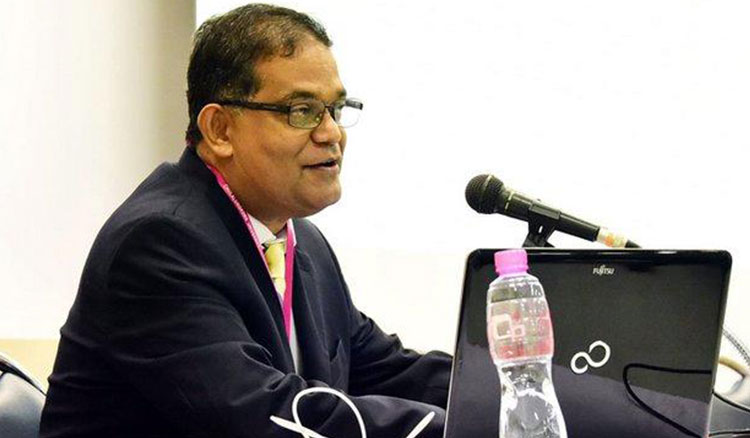
ASEAN
TIME FOR THAILAND TO STEP IN AND LEAD ASEAN AGAIN
Since its birth on Aug 8 1967, Asean has been a cornerstone of Thailand's foreign policy. But what has been the nature and extent of Thailand's involvement in
Asean? Has Thailand been a passive bystander or an active contributor to Asean's successes? And now that Asean is entering a new stage, what role can Thailand
play in helping the organisation address the challenges it faces and ensuring it continues to progress?
Although the establishment of Asean was the result of several factors, the role played by Thailand, especially then Foreign Minister Thanat Khoman, was critical.
Thailand had acted as a mediator between Indonesia and Malaysia to bring about an end of their conflict, known as the Konfrontasi that took place between
1963 and 1967. And the end of that conflict led directly to a diplomatic and political momentum that culminated in the establishment of Asean. Thanat played
a central role in this. He drafted the founding Bangkok Declaration of Aug 8, 1967. As a secret British document of Aug 11, 1967 noted, “Thanat fully deserves
the warm tributes to his statesmanship [in the creation of Asean] which were paid t him by the other delegates.”
A turning point in Thailand's engagement in Asean came in the wake of the Vietnamese invasion and occupation of Cambodia in December 1979. This rendered
Thailand as a "frontline" state. Thailand sought to manage the Cambodian conflict by seeking the international isolation of Vietnam, channelling international aid
to the coalition of Cambodian groups resisting the Vietnamese occupation, and seeking a diplomatic and political solution to the conflict. Thai Prime Minister
Chatichai Choonhavan's "battlefields to marketplaces" policy played a major role in breaking the stalemate in the Cambodian conflict.
Thailand was at the centre stage of Asean's evolution in the post-Cold War era. It was in Bangkok in 1994 that the Asean Regional Forum (ARF) was founded. This
forum brought together Asean and all the major powers of the Asia Pacific region. The ARF marked the beginning of the principle of "Asean centrality" in the Asia-Pacific
regional security architecture, which preserved Asean's identity and prevented it from being marginalised.
Thailand was also critical to the next major stage in Asean's evolution, which was triggered by the Asian financial crisis of 1997, also known as the "tom yum koong crisis".
As Asean came under widespread international criticism because of its perceived lack of action and inability to stem the crisis, the foreign minister of the new Thai
government under Chuan Leekpai, Surin Pitsuwan, proposed the idea of "flexible engagement". In his thinking, domestic developments in Asean member countries
that could have a regional impact -- be it an economic crisis, domestic political instability, air pollution, disease, and drug trafficking -- should not be "swept under the
carpet" but be discussed and jointly addressed by Asean. This doctrine of flexible engagement was initially viewed with misgivings by other Asean members, including
Indonesia, but soon became a major basis for reform.
Asean today faces multiple challenges. The rise of China, its growing assertiveness in territorial conflicts in the South China Sea, are reshaping the balance of power in
Asia. China has launched several regional initiatives, including the One Belt, One Road (Obor) and Asian Infrastructure Development Bank (AIIB) that are outside of, and
may even challenge, the Asean-centred regional architecture Intra-Asean unity over the South China Sea dispute has frayed. As Sino-US competition escalates, Asean's
ability to play the role of a neutral broker in the great power competition has diminished. Some critics question the relevance of Asean in coping with great power rivalry.
They not only write off the idea of "Asean centrality" in Asia's regional architecture, but also the very survival of Asean as a regional community. While the great powers,
including the US and China, continue to pay lip-service to Asean centrality, their policies in the region have undermined the corollary principle of Asean neutrality. The
Trump administration has rejected multilateral trade agreements in favour of bilateral deals where America can have greater leverage, thereby threatening Asean’s norm
of “open regionalism”.
Asean also faces growing dangers of internal strife, religious radicalisation and the struggle between the forces of democratisation and authoritarianism. Success or
failure to deal with these challenges could make the difference between an open, stable and developmental regional community or a stagnant, authoritarian and
unstable region that could become a Chinese sphere of influence. Last but not least, the rise of non-traditional security (NTS) threats, such as trans-boundary pollution,
pandemics, and natural disasters, is a major area of concern for Asean.
To conclude, Thailand has played a proactive and productive role that has been central to the foundation, consolidation and transformation of Asean. What is also
remarkable is Thailand's support for Asean has been maintained throughout its domestic oscillations between military and civilian rule. Now that Asean is facing
another turning point in view of the escalating great power rivalry in Asia, will Thailand once again step in to move Asean forward? Thailand's role is ever more
important today given Jokowi's Indonesia has scaled down its role as a leader of Asean. Thailand's role in the creation of Asean, and its previous ideas for reforming
Asean such as "flexible engagement", mean that should Bangkok so desire, it can emerge as a major player in injecting Asean with a new sense of purpose and vitality
to ensure its continuing relevance. This remains a major challenge for Thai governments. It's time for Bangkok to lead again.




